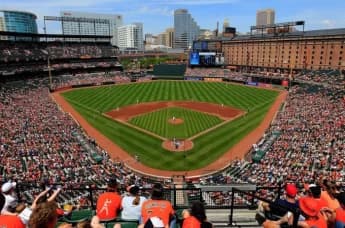Home of the Cubs, Heart of Wrigleyville – Where Baseball History Comes Alive
Introduction
Since opening its gates in 1914, Wrigley Field has stood as a hallowed ground for baseball purists, blending old-school charm with modern excitement. As the second-oldest MLB stadium (after Fenway Park), it’s more than just a ballpark—it’s a living museum of America’s pastime, where ivy-covered walls, hand-turned scoreboards, and the echoes of legends like Ernie Banks and Babe Ruth still resonate.
From the Cubs’ curse-breaking 2016 World Series to the rooftop views of Wrigleyville, this iconic venue offers an unmatched gameday experience. Whether you're a die-hard baseball fan or a first-time visitor, stepping into Wrigley Field is like stepping back in time—while still enjoying the thrills of today’s game.
This deep dive explores:
-
The history & evolution of Wrigley Field
-
Iconic architectural features (ivy, scoreboard, marquee)
-
Legendary moments (Babe Ruth’s "called shot," Kerry Wood’s 20-K game)
-
What makes the Wrigleyville experience unique
-
How the ballpark balances tradition with modern upgrades
A Century of History: From Weeghman Park to Wrigley Field
1914: Birth of a Ballpark
-
Built in just six weeks for the Chicago Whales of the Federal League.
-
Originally named Weeghman Park after owner Charles Weeghman.
1916: The Cubs Move In
-
After the Federal League folded, Weeghman bought the Cubs and moved them to the park.
-
Renamed Cubs Park in 1920, then Wrigley Field in 1926 (after gum magnate William Wrigley Jr.).
Key Renovations & Milestones
-
1937: Ivy planted on outfield walls, hand-operated scoreboard added.
-
1988: First night game (after 74 years of daytime-only baseball).
-
2014–2019: "1060 Project" renovations modernized amenities while preserving history.
-
2020: Designated a National Historic Landmark.
Architectural Wonders: What Makes Wrigley Unique?
1. The Ivy-Covered Walls
-
Planted in 1937, the Boston ivy turns green in summer, brown in fall.
-
Ground rule: If a ball gets stuck, it’s a ground-rule double.
2. The Hand-Operated Scoreboard
-
No digital screens here—scores are still updated by hand from inside.
-
A throwback to baseball’s golden age.
3. The Iconic Marquee
-
The red-and-white sign at the main entrance reads: "Wrigley Field – Home of Chicago Cubs."
-
One of the most photographed spots in sports.
4. Rooftop Views
-
Buildings across Waveland & Sheffield Avenues offer unofficial seating.
-
A Wrigleyville tradition since the 1980s.
Legendary Moments in Wrigley History
Babe Ruth’s "Called Shot" (1932 World Series)
-
Did he really point to center field before homering? Debate still rages.
Kerry Wood’s 20-Strikeout Game (1998)
-
One of the most dominant pitching performances ever.
The Curse is Broken (2016 World Series)
-
Though Game 7 was in Cleveland, Wrigleyville erupted in celebration.
-
108 years of waiting ended in an unforgettable parade.
First Night Game (1988)
-
After decades of resistance, lights finally arrived.
-
(Fun fact: The game was rained out after 3 innings!)
The Wrigleyville Experience: More Than Just Baseball
Before the Game
-
Murphy’s Bleachers – Classic sports bar with rooftop views.
-
The Cubby Bear – Live music & packed crowds.
Inside the Ballpark
-
Must-try eats: Chicago-style dogs, Old Style beer, Garrett Popcorn.
-
Seventh-inning stretch: Sing "Take Me Out to the Ballgame" like Harry Caray.
After the Game
-
Gallagher Way: Outdoor plaza with bars & events.
-
Statue Row: Tributes to Ernie Banks, Ron Santo, Billy Williams.
Modern Upgrades vs. Timeless Tradition
Balancing Old & New
-
Added video boards (2015) – But kept the manual scoreboard.
-
Expanded concourses & clubs – Without losing the intimate feel.
-
Night games (since 1988) – But day baseball remains sacred.
Future Plans
-
More accessibility upgrades (wheelchair seating, better pathways).
-
Continued preservation efforts to maintain historic charm.
Why Wrigley Field Still Matters
In an era of retractable roofs and mega-stadiums, Wrigley stands apart. It’s a place where:
-
Fans feel connected to the game (no seat is too far).
-
History is honored, not erased.
-
Every visit feels special—whether it’s your first or your hundredth.
Final Thought:
"Wrigley Field isn’t just where baseball is played. It’s where baseball lives."
Fast Facts
-
Opened: April 23, 1914
-
Capacity: 41,649
-
Last MLB park with lights (1988)
-
First NHL Winter Classic (2009)
-
Upcoming Concert: Post Malone (May 2025)







